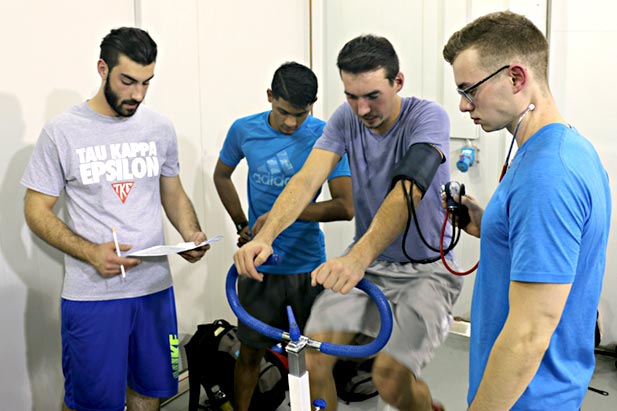UOIT Kinesiology students use ACE for heat stress research
ACE looking to develop further university research collaborations
December 21, 2015

Southern Ontario certainly gets its share of heat alert days every summer. But hot weather on a specific day is never guaranteed. If you are a Kinesiology researcher trying to examine how athletes respond to exercise in extreme heat, this means you only have a short windows of opportunity to set up an ideal testing scenario for obtaining important new data.
Made-to-order weather conditions that are consistent and predictable are a researcher’s dream. And that’s exactly what the ACE Climatic Chambers at the University of Ontario Institute of Technology (UOIT) provide: the ideal environment for extreme weather testing.
When UOIT Faculty of Health Sciences Kinesiology Instructor Michael Williams-Bell and his third-year Exercise Physiology students needed a place to study the cardiovascular response of exercise in a hot and humid climate, they turned to ACE.
“ACE is a state-of-the-art facility that optimizes student learning by offering hands-on experience outside of the classroom that cannot be provided simply through lectures or a textbook,” said Williams-Bell, who is also a PhD candidate in UOIT’s Applied Bioscience program, “We needed specific temperatures and exact humidity conditions to replicate a mid-July heat alert day, and ACE delivered. ACE has the capacity to enhance our understanding of environmental, occupational and sports physiology.”
For the two-day test, stationary bikes were set up in one of the ACE climate chambers. ACE cranked the temperature to a sweltering 35 degrees Celsius (ACE can go as high as plus 60 or as low as minus 40) with the humidity dialed up to 60 per cent. In the scorching conditions, Williams-Bell and his team recorded the participant cardiovascular vitals. The data will be compared with the response of similar exercise in average or normal climate conditions.
ACE is unlike any facility in North America, making the learning possibilities for UOIT students truly unique from any other university. ACE looks forward to assisting more UOIT faculties conducting similar climate-related research and testing. Professors interested in enhancing educational offerings to their students are encouraged to reach out to ACE to further explore possibilities.
For more information about ACE:
Colin Howard
Marketing Specialist and Account Manager, ACE
University of Ontario Institute of Technology
colin.howard@uoit.ca
289.688.0930



